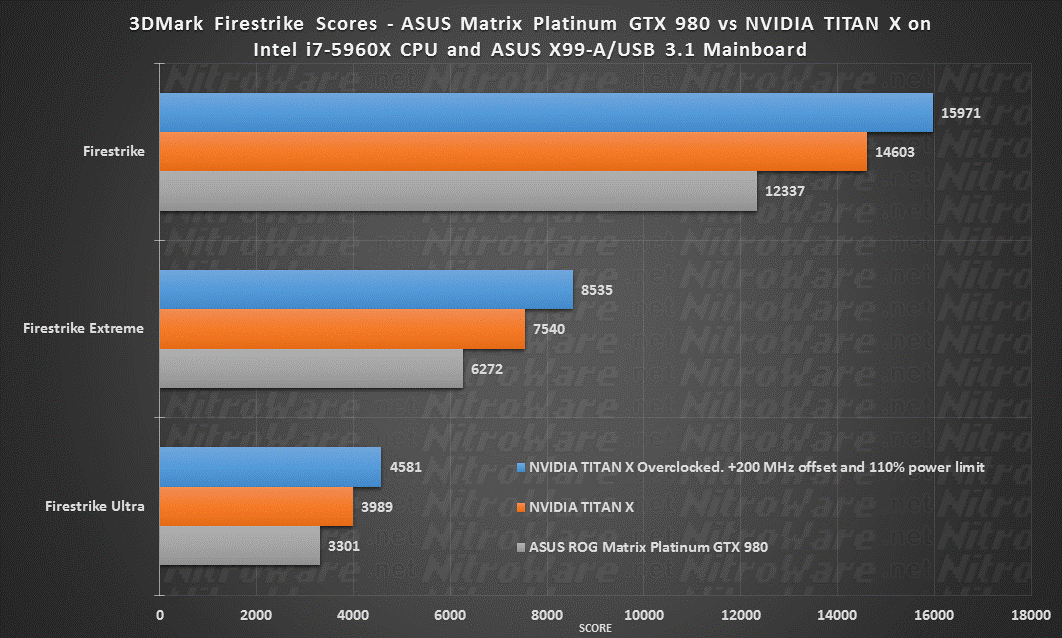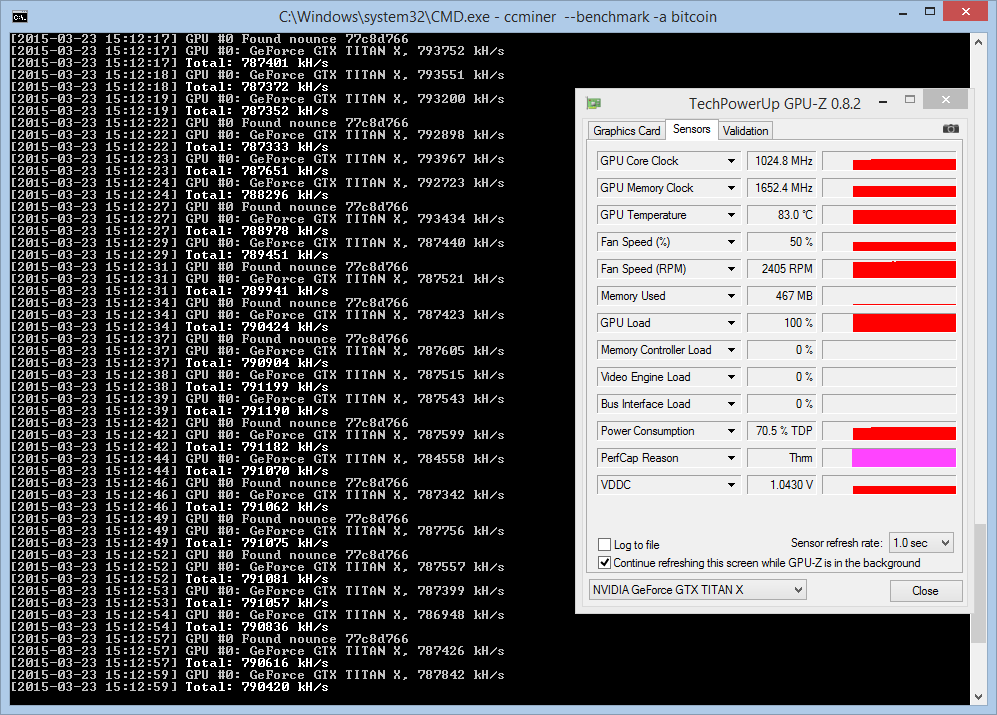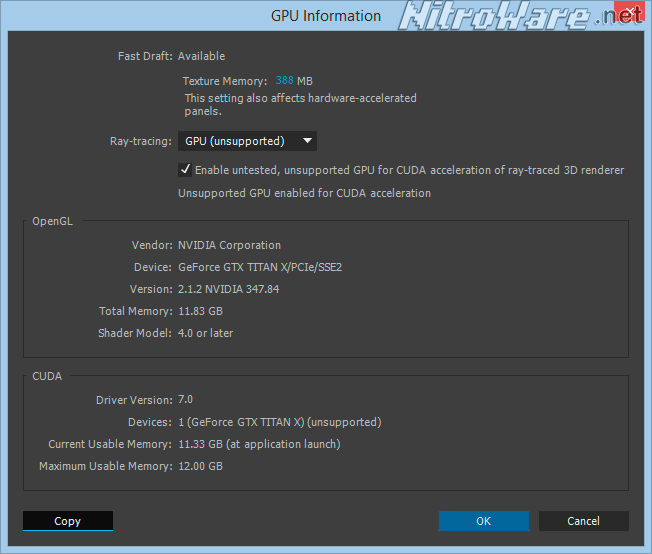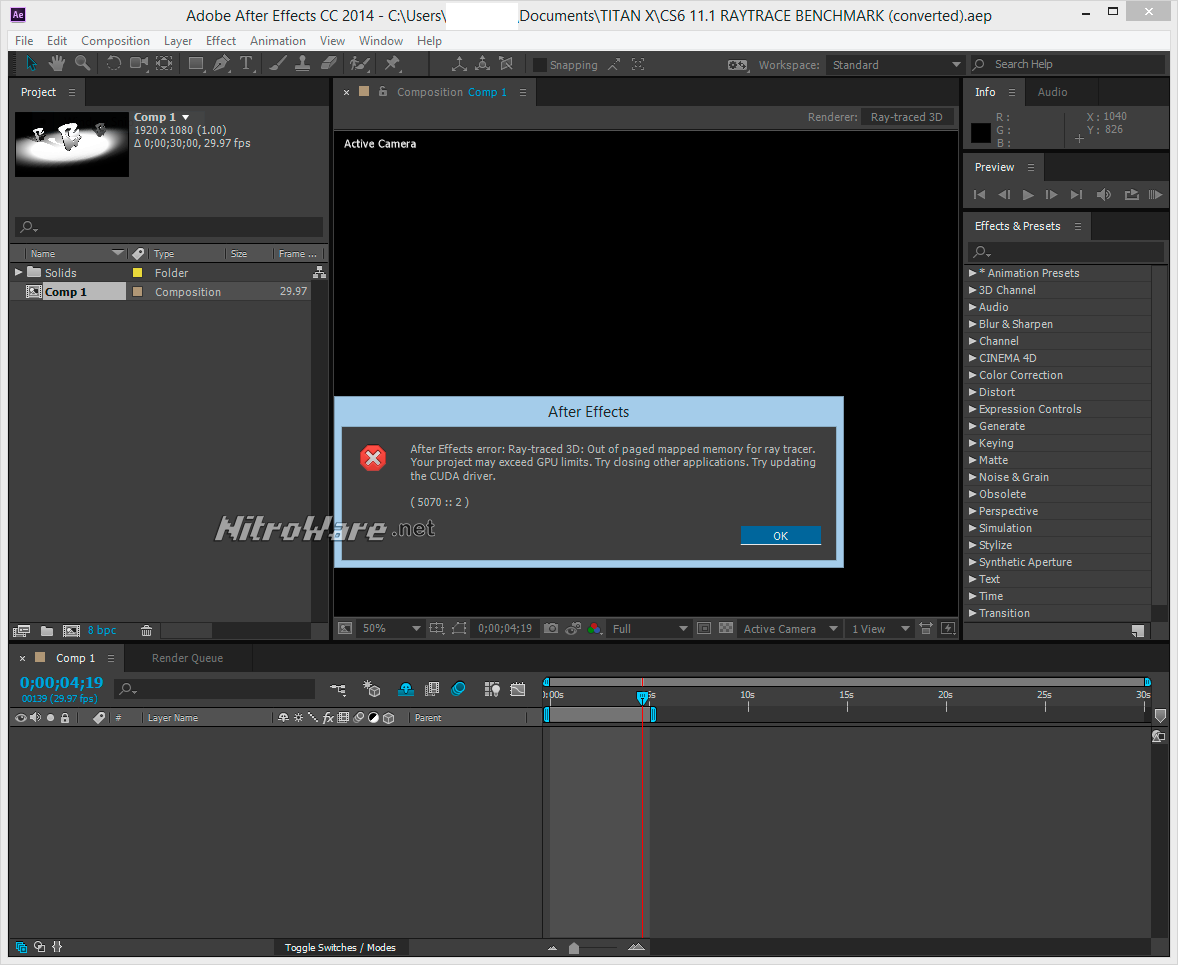GPU Compute and Professional Graphics Benchmarks
GPU Compute synthetic benchmarks using CUDA OpenCL and DirectCompute
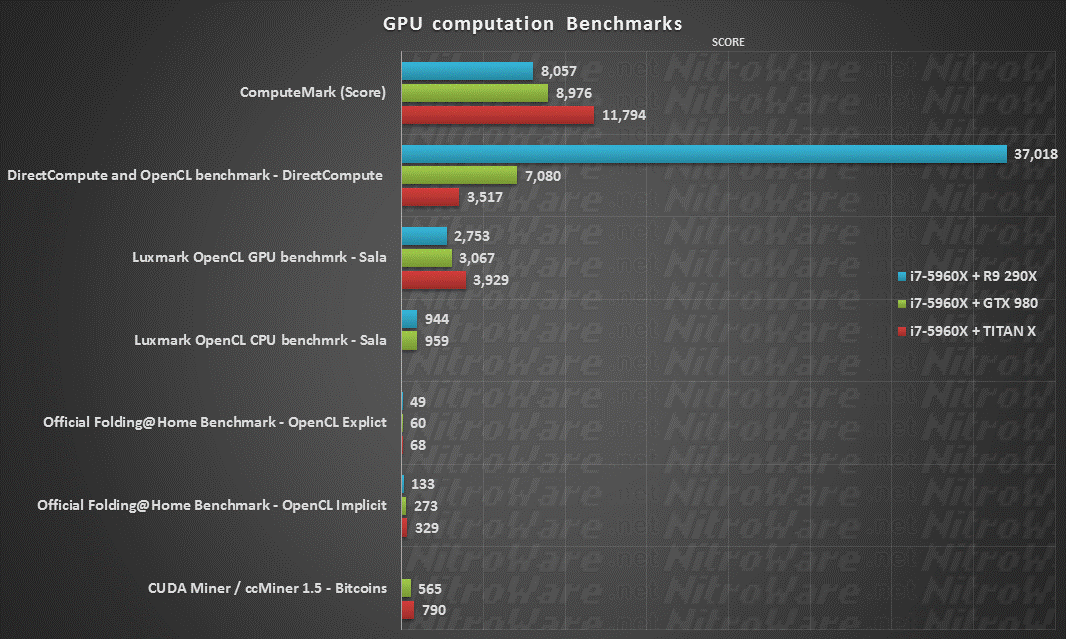
Computemark is a set of synthetic benchmarks designed to make good use of GPU computing, consisting of fractals,fire and other complex structures. Again TITAN X performs well up to 30%.
DirectCompute benchmark has always favoured AMD cards for some reason, their driver design is different as is their compute cores, focusing on horsepower rather than speed or efficiency, where as GeForce cards favour CUDA instead of OpenCL here.
Luxmark is a industry favourite, with a TITAN X providing 4x the better performance than our 5960X CPU.
Folding@Home Benchmark is optimised for CUDA but we can't use this feature due to outdated CUDA support for Maxwell, but OpenCL works and lets us compare across different OpenGL hardware.
Both CUDA miner and its replacement from the same developer ccMiner support Maxwell GPUs, with ccMiner fully supporting the 900 series and TITAN X. 790 Mhash/s for Bitcoin is actually the worst case here, as throughput starts out at around 900 Mhash/s and reduces once the GPU's temp and power limits are reached. With overclocking 1000Mhash/s would be a remarkable number to achieve for a single 250 watt GPU !.
While CUDA Miner did work on GTX980, on TITAN X it's auto configure routine would fail, causing a infinite loop. Amusingly this loop would utilise all the cards 12GB memory, which we had trouble filling otherwise using normal applications ! ccMiner is from the same developer and more optimised for Maxwell GPU so we naturally recommend this instead.
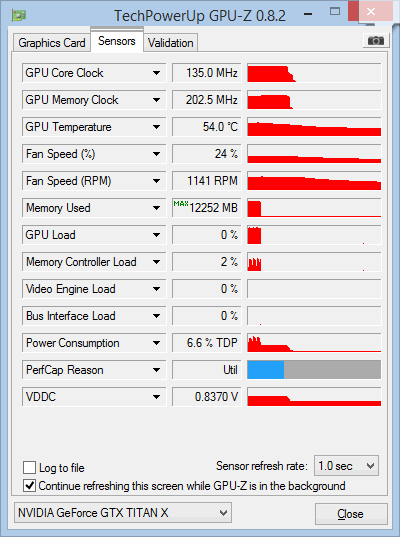
Photoshop, Blender
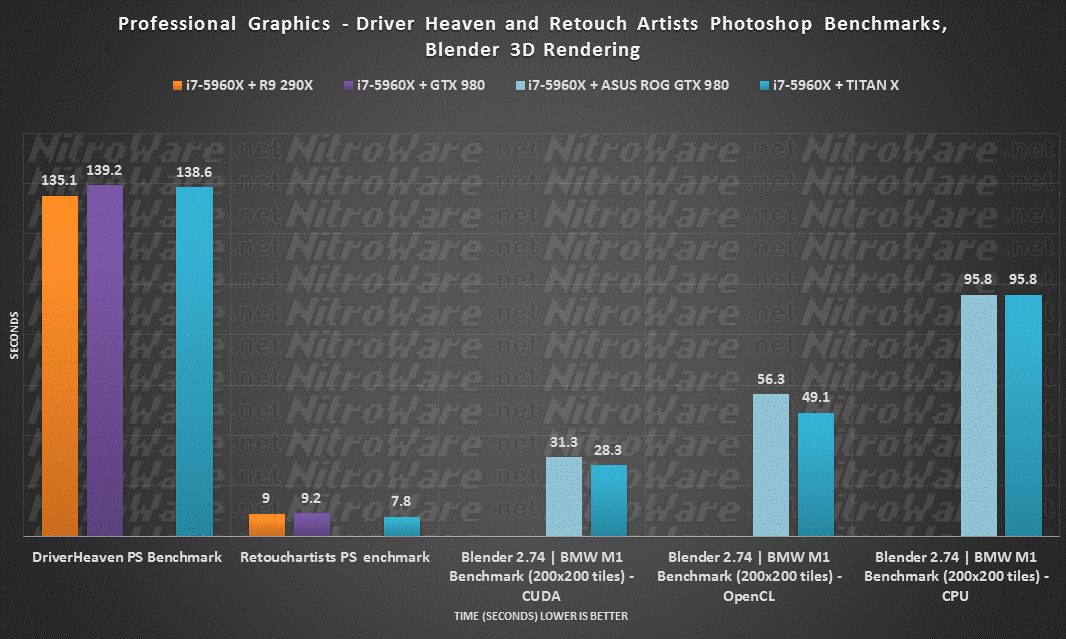
Photoshop CC relies on OpenGL heavily for image manipulation,compositing and rasterisation. With multi layer Full HD resolution documents open, GPU temps can rise to the mid 60s as there is a mild load.
However, Driverheaven's Photoshop benchmark focuses on filters and image size that are mainly CPU bound so GPU has a minimal effect here. Retouchartist's benchmark at least performs image manipulation (resizing) which can take advantage of the OpenGL GPU hardware.
We have tested Blender before but its only since this review we found the optimal settings which REALLY showcase the power of GPU computing and hardware acceleration. Despite the BMW M1 benchmarking claiming 'do not touch any settings', to get the optimal performance we MUST set the tile size to at least 200x200, versus the 100x27 default.
OpenCL gives us a 2x speedup over 5960X 8 core/16 thread CPU rendering and CUDA with TITAN X gives us a 3x speedup, and more importantly a boost over GTX 980. More the reason a GPU is needed for professional content creation.
SPEC Viewperf 11, SPEC Viewperf 12
SPECViewPerf is a sample collection of professional applications from the design, engineering, medical and science fields, used to determine performance for these specific demanding applications.
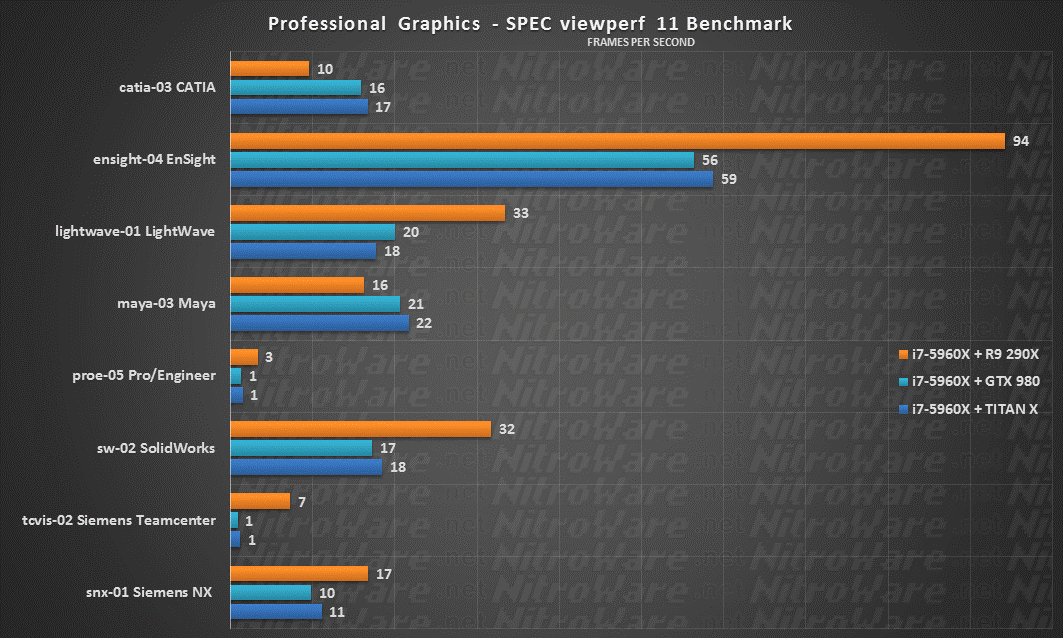
We run SPEC 11 with 4x MSAA ON at 1080p which is not the default, default is no Anti-Aliasing. Things to consider: Viewperf 11 is slightly older now and AMD R9 290X has significantly higher double precision floating point math performance, 704 Gigaflops versus 220 Gigaflops. Additionally it is recommended to use a Quadro or FirePro GPU with these professional apps, not a consumer GeForce or Radeon. Some apps now support consumer GPUs eg Maya so this is why we continue with these professional grade tests.
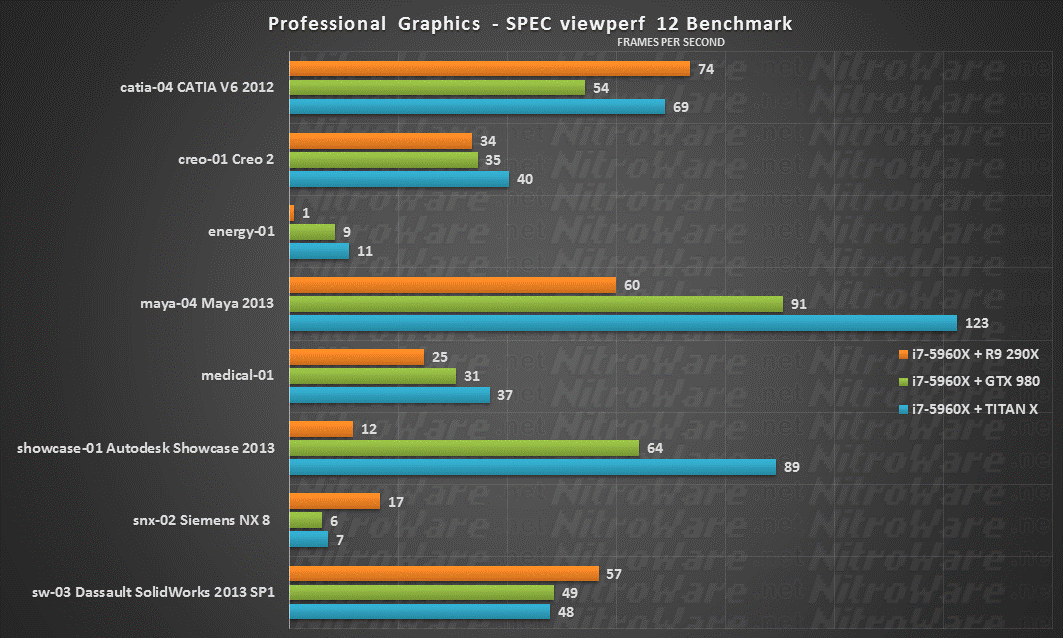
SPEC 12 changes things slightly, updated tests and engine. it no longer offers the Anti-Aliasing switch so we run it at default 'official' test mode
Energy and Medical tests are in-house simulations created by SPEC organisation to demonstrate those use cases, they are not actual commercial/professional applications. The other tests are especially CATIA, Maya, Siemens and Dassault. While the Cheaper R9 290X performs well in some tests TITAN X just runs away in others.
Maxon Cinebench R11.5 and R15
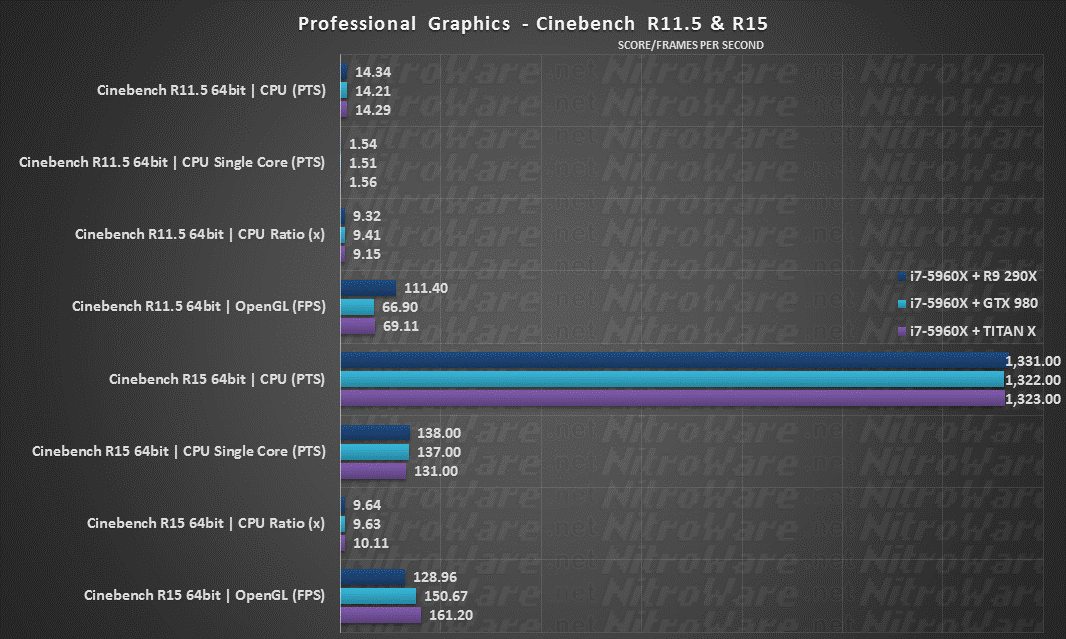
While the Cinebench benchmark has been widely used and respected for years thanks to its decent multi-threading, its appeal was slightly limited as it only served as a performance test for people using Maxon's' Cinema 4D 3D modelling software. Additionally for the older versions of Cinebench, OpenGL rendering performance seemed tied to clockspeed with poorer multi-threading capability, fixed in newer versions.
Adobe has begun to bundle Cinema 4D Lite with its popular AfterEffects CC software so now Cinebench has further usefulness.
We provide this test as a reference for OpenGL performance. CPU scores are included to show that different motherboards used are within performance tolerance. TITAN X could be faster but does what it needs to do here.
Adobe AfterEffects CC 2014
Adobe introduced support for CUDA (GPU) Acceleration of 3D Ray-Tracing using NVIDIA's OPTIX library. Kepler cards are supported however Maxwell are not. To get around this Adobe have recommended the recently bundled Cinema 4D Lite which is not GPU hardware accelerated.
Adobe claims the feature (CUDA Ray-tracing)is old and outdated. We reached out to NVIDIA for their side of the story but they did not comment.
Overclocking
GTX TITAN X is currently only available as NVIDIA designed and built boards from NVIDIA directly and from its Add-In-Board partners. Since the boards are standardised the overclocking headroom can be 'guaranteed' with up to 1400 MHz from the 1000 base being described as possible.
Since GeForce cards have GPU boost, we can only set the base, not the boost clock. We tested a 200 MHz offset for the GPU core and memory BASE clocks, plus 110% power limit and 91C temp limit which is the maximum allowed for TITAN X. The 200 MHz offset will give us near 1400 MHz when boost is in effect.
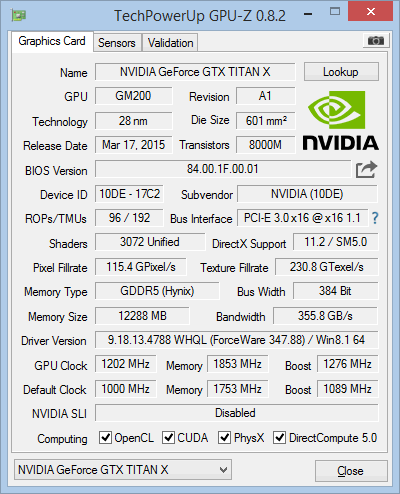
We see 9-13% increase in Firestrike scores, which is fine given TITAN X's performance advantage over any GTX 980 anyway. This is just an example of TITAN X's overclocking capabilities. We are limited by power and heat, so it will be interesting to see how far the GPU can go under water or sub-zero cooling, especially when some pro-overclockers modify the power system to deliver more power.
